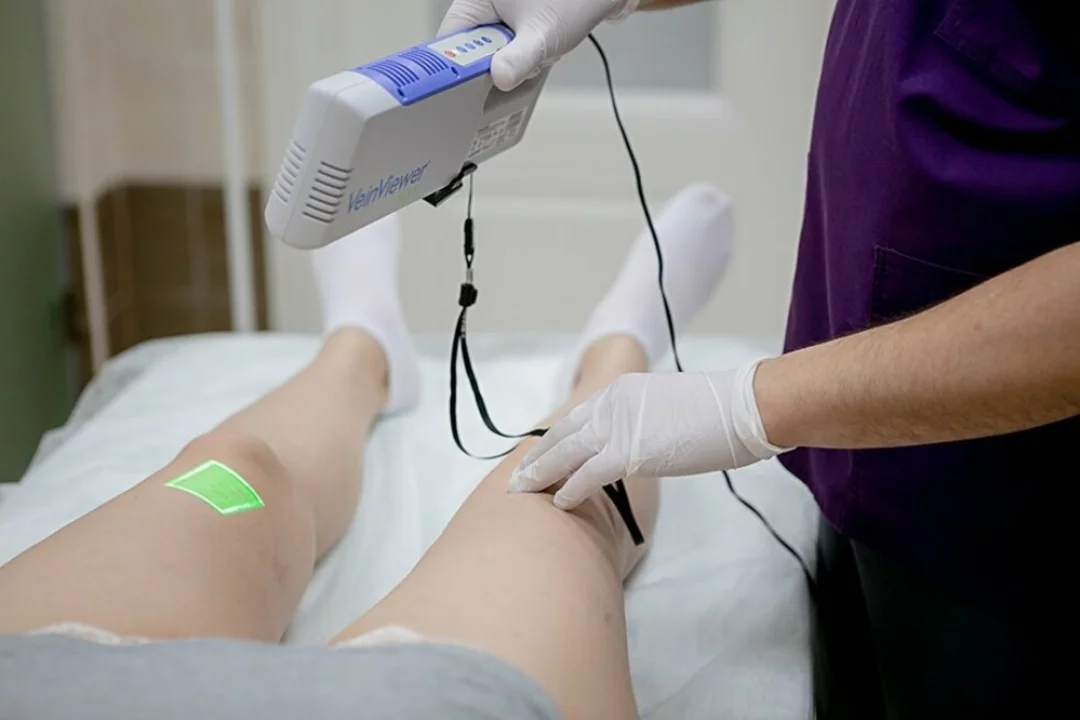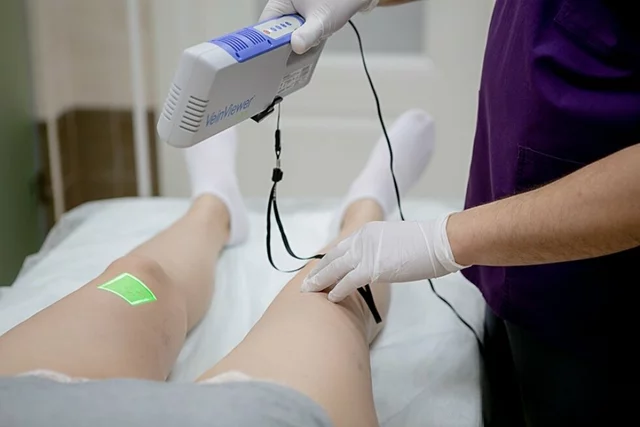Revolutionizing Vascular Disease Treatment with Cutting-Edge Technology
As we look forward to the future of vascular disease treatment, it's clear that emerging therapies and groundbreaking research are poised to revolutionize the way we approach these debilitating conditions. From innovative drug therapies to cutting-edge surgical techniques, we can expect to see significant advancements in the coming years. In this article, we'll explore some of the latest developments in vascular disease treatment and highlight the research that's shaping the future of this field.
Novel Drug Therapies to Target Vascular Diseases
The development of new drug therapies is a critical component in the ongoing fight against vascular diseases. As our understanding of these conditions improves, researchers are identifying new molecular targets and designing drugs specifically tailored to address the underlying causes of vascular diseases. Some promising new drug therapies include anti-inflammatory compounds, anti-angiogenesis drugs, and gene therapies that can repair damaged blood vessels. With continued research and development, these novel drug therapies could provide more effective, targeted treatments for patients suffering from vascular diseases.
Stem Cell Therapy: A Potential Game Changer
Stem cell therapy is another exciting area of research in vascular disease treatment. By harnessing the regenerative power of stem cells, researchers hope to develop new treatments capable of repairing and replacing damaged blood vessels. Several preclinical studies have demonstrated the potential of stem cell therapy to improve blood flow and promote the growth of new blood vessels in animal models of vascular diseases. In the not-too-distant future, stem cell therapy could become a key component of personalized medicine, offering hope to patients with previously untreatable vascular conditions.
Advancements in Endovascular Surgical Techniques
Endovascular surgery has already transformed the treatment of many vascular diseases by offering minimally invasive alternatives to traditional open surgeries. As researchers continue to develop new tools and techniques, we can expect to see further advancements in this field. For example, robotic-assisted endovascular surgery offers the potential for greater precision and control, while new imaging technologies can provide real-time, 3D visualization of blood vessels during procedures. These advancements will likely lead to safer, more effective endovascular treatments for a wide range of vascular diseases.
3D Printing and Personalized Vascular Grafts
Another exciting development in vascular disease treatment is the use of 3D printing to create personalized vascular grafts. By using a patient's own imaging data, researchers can design and print custom grafts that perfectly match the patient's anatomy. This approach not only improves the fit and function of the graft but also reduces the risk of complications and rejection. As 3D printing technology continues to advance, it's likely that we'll see more widespread use of this technique in vascular disease treatment.
Gene Editing to Prevent Vascular Diseases
Gene editing technologies like CRISPR/Cas9 hold tremendous potential for the prevention and treatment of vascular diseases. By targeting specific genes associated with these conditions, researchers may be able to correct genetic mutations or alter gene expression to reduce the risk of developing vascular diseases. Although this field is still in its infancy, early studies have shown promising results, suggesting that gene editing could play a significant role in the future of vascular disease treatment.
Artificial Intelligence in Vascular Disease Diagnosis and Treatment
Artificial intelligence (AI) is another area of research that could have a profound impact on the future of vascular disease treatment. By analyzing large datasets and identifying patterns, AI has the potential to improve diagnosis, predict treatment outcomes, and even guide the development of new therapies. For example, AI algorithms could analyze imaging data to identify early signs of vascular diseases, allowing for earlier intervention and potentially preventing the progression of the disease. As AI technology continues to advance, it's likely that we'll see more applications in the field of vascular disease treatment.
Nanotechnology: A Promising Tool for Targeted Drug Delivery
Nanotechnology is yet another promising area of research in vascular disease treatment. By developing targeted drug delivery systems using nanoparticles, researchers hope to improve the efficacy of existing drug therapies while minimizing side effects. For example, nanoparticles can be designed to specifically target damaged blood vessels, delivering drugs directly to the site of the disease and reducing the risk of systemic side effects. As researchers continue to refine these targeted drug delivery systems, we can expect to see more effective, personalized treatments for vascular diseases.
Collaboration and Innovation: The Future of Vascular Disease Treatment
In conclusion, the future of vascular disease treatment is undoubtedly bright, with numerous emerging therapies and research avenues promising to revolutionize the field. As researchers continue to break new ground and collaborate across disciplines, we can expect to see significant advancements in the diagnosis, prevention, and treatment of vascular diseases. It's an exciting time to be involved in this area of medicine, and I look forward to witnessing the incredible progress that lies ahead.



Tracy Blake
May 11, 2023 at 16:18Okay but like… imagine if we could just *print* new arteries like LEGO bricks? 🤯 I mean, 3D-printed grafts that fit your body like a glove? That’s not science fiction anymore-it’s Tuesday. And don’t even get me started on nanobots zipping through your veins like tiny Uber drivers delivering medicine straight to the pain zone. We’re living in the damn future, people. 🌌💉
Leo Lee
May 12, 2023 at 14:26Stop romanticizing tech. These ‘breakthroughs’ are funded by pharma giants who want to sell you a $500,000 gene edit when a $5 statin and a walk would’ve worked. CRISPR isn’t magic-it’s a patent waiting to happen. Real medicine is lifestyle, not lab coats.
Isabel Piaggi
May 13, 2023 at 10:24stem cell therapy is so cool like… imagine your own cells fixing your arteries like little tiny construction workers 🤖❤️ but also… what if they just… go rogue? like… what if they start making extra blood vessels where they shouldn’t? like… in your brain? or your eye? i mean… it’s beautiful but also kinda terrifying??
Tom McInnes
May 13, 2023 at 12:57These advances are undeniably promising, but we must not overlook the foundational role of public health initiatives-diet, exercise, smoking cessation. Innovation without prevention is just expensive triage.
Stephanie Cepero
May 13, 2023 at 14:05I just… I can’t stop thinking about how this changes lives. Someone’s grandma who couldn’t walk without pain… now she’s dancing at her granddaughter’s wedding because of a custom graft. Or a kid with a genetic condition who gets edited before symptoms even start. This isn’t just science-it’s hope, wrapped in lab coats and algorithms. 💕
Michael Tribone
May 13, 2023 at 16:36Hey everyone-this is wild but also so real. If you’re even slightly interested in this stuff, check out the NIH’s vascular innovation portal. They’ve got open datasets and even citizen science projects where you can help label vessel images. We’re not just watching the future-we’re building it, together. 🙌
Nancy Lowry
May 14, 2023 at 13:15Everyone’s acting like this is revolutionary. Newsflash: we’ve had stents since the 80s. AI? We’ve been using it to read CT scans for a decade. You think a 3D-printed graft is magic? It’s just fancy plastic. Real progress is when we stop treating symptoms and start fixing the root cause-obesity, processed food, sitting all day. Stop chasing shiny tech and fix the damn system.
Khanyisa Mhlongo
May 15, 2023 at 02:15Oh my stars and garters, this is the stuff of dreams!! 🌟 Nanobots? Gene edits? Printing arteries like 3D cookies? I’m not just excited-I’m *giddy*! Like, imagine your grandkids asking, ‘Mama, did people really have open-heart surgery back then?’ And you just smile and say, ‘Yes, baby… and they called it ‘normal.’’ We are living in the golden age of vascular magic!! 💫🩺
Manvika Gupta
May 16, 2023 at 01:38soo much hope in this!! i live in india and we dont have access to all this tech but i read this and i feel like one day… maybe… my mom can get a custom graft or something. its not just for rich countries. its for everyone. please dont let this stay a luxury. 🙏